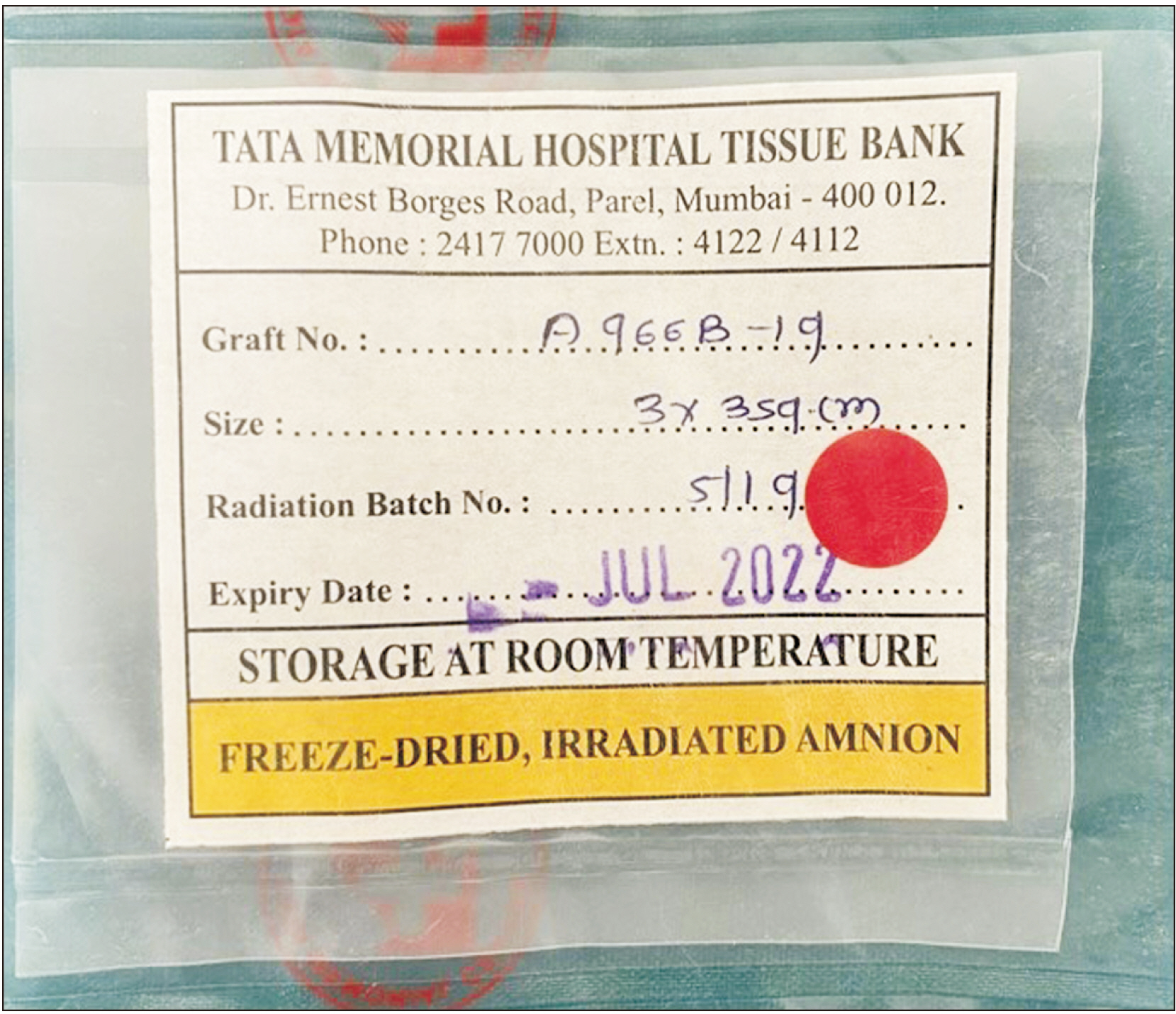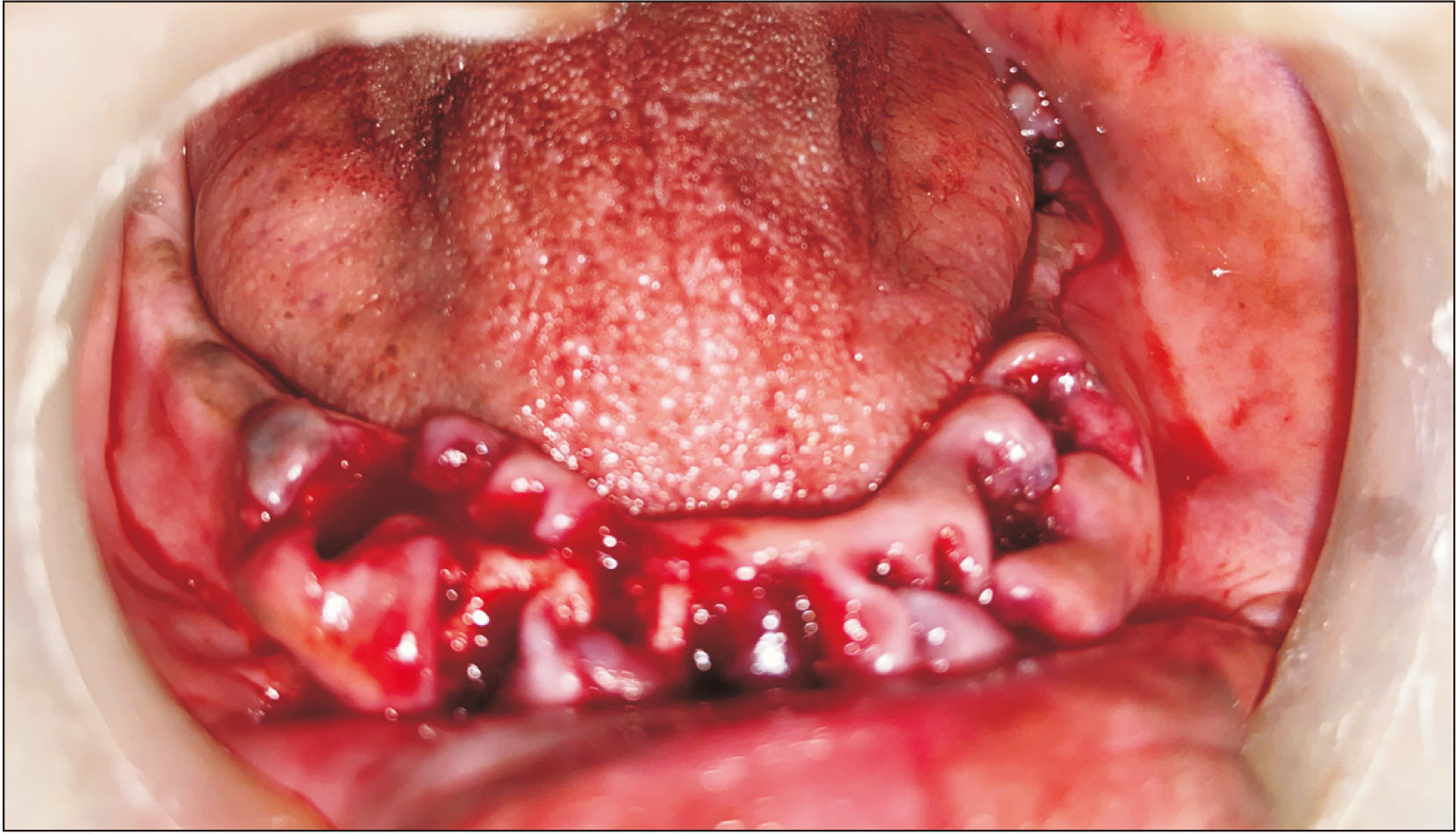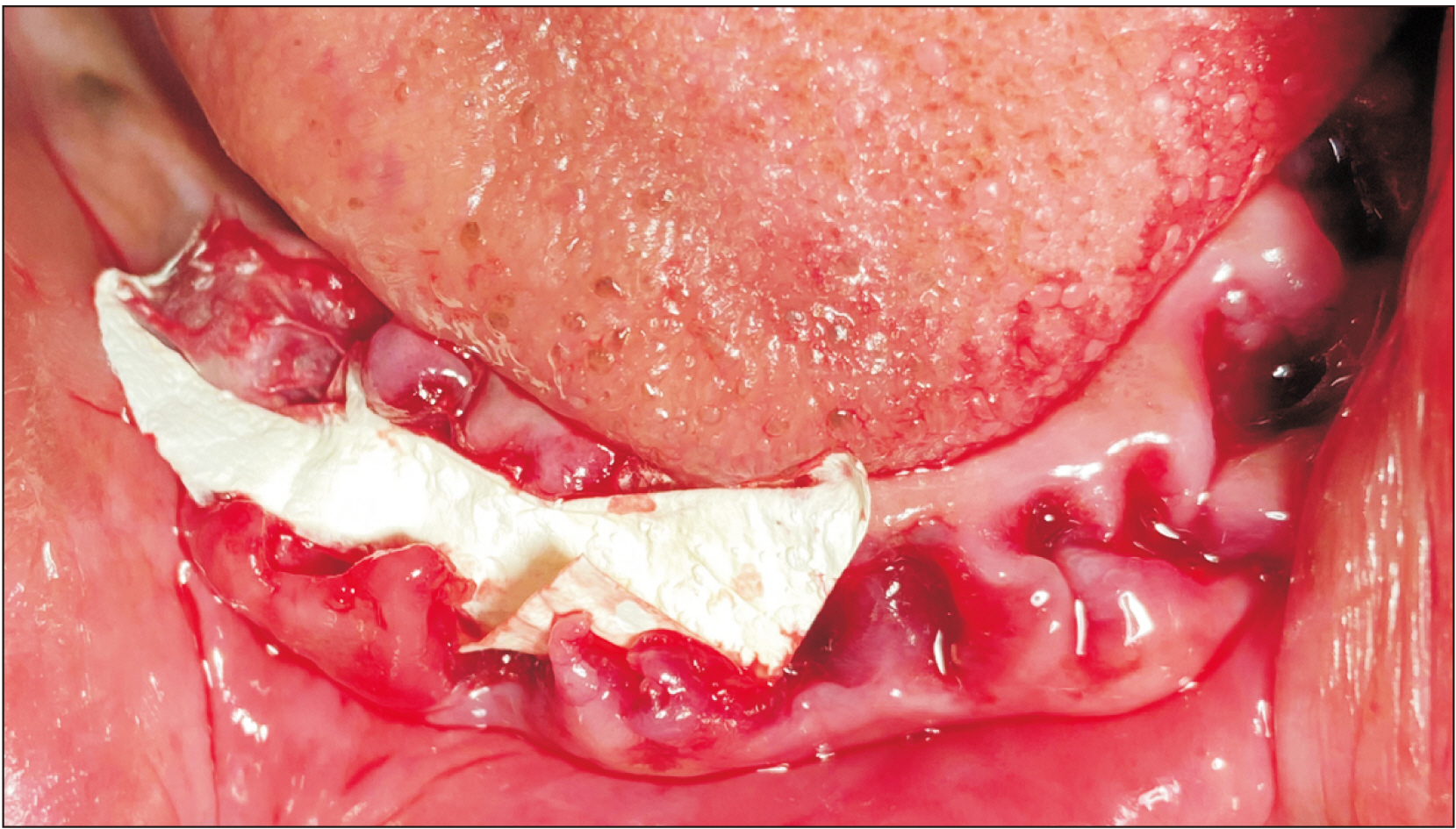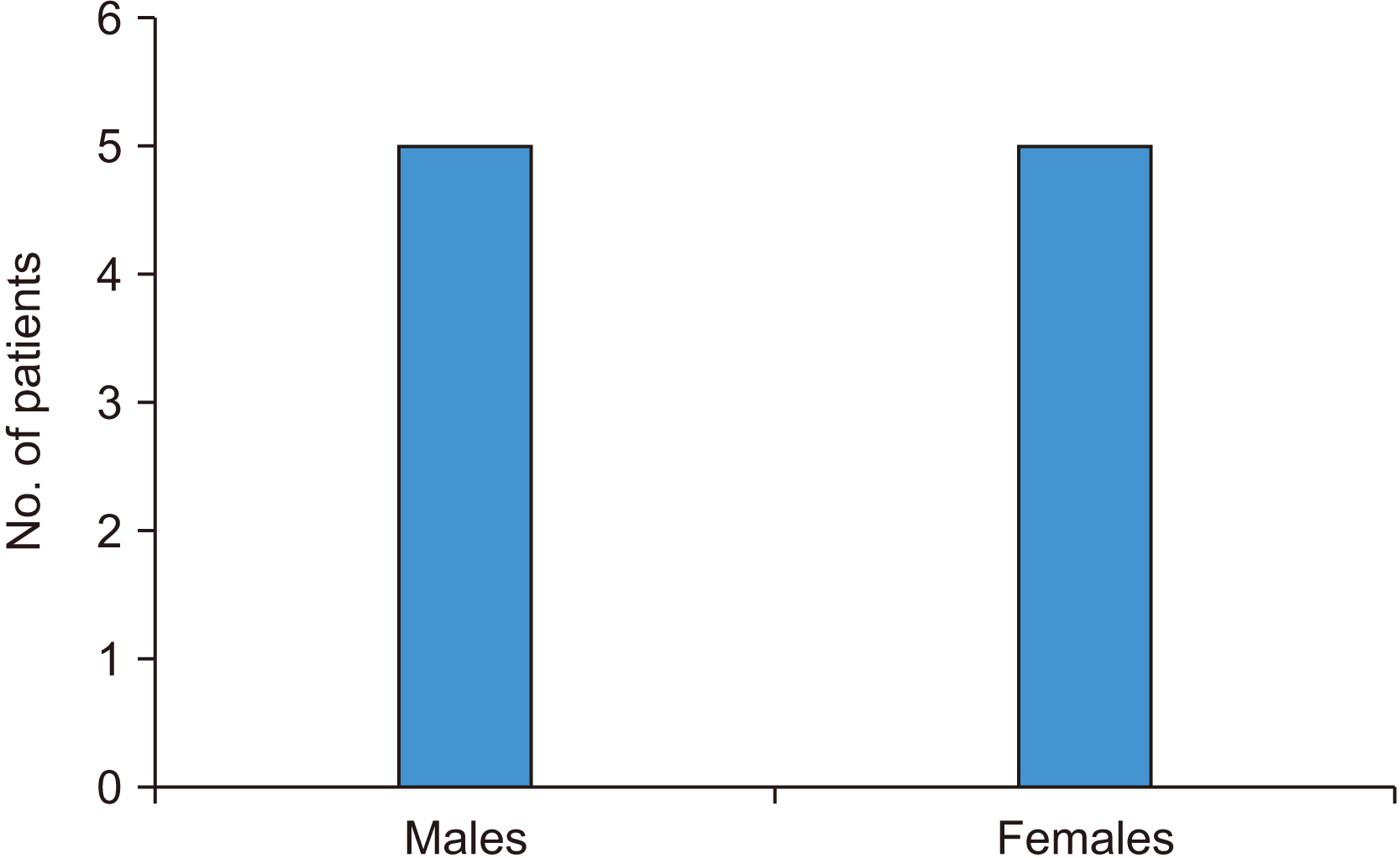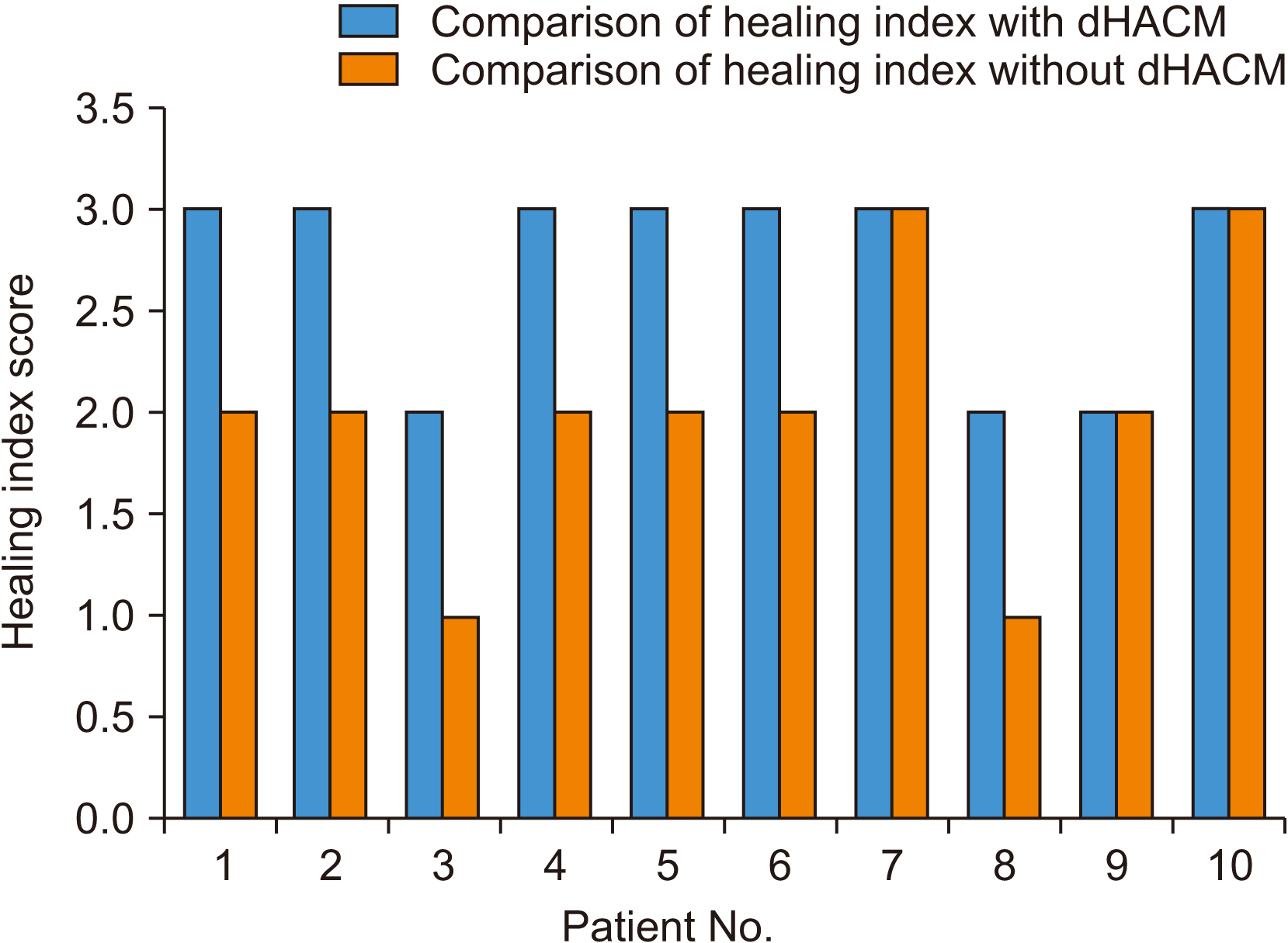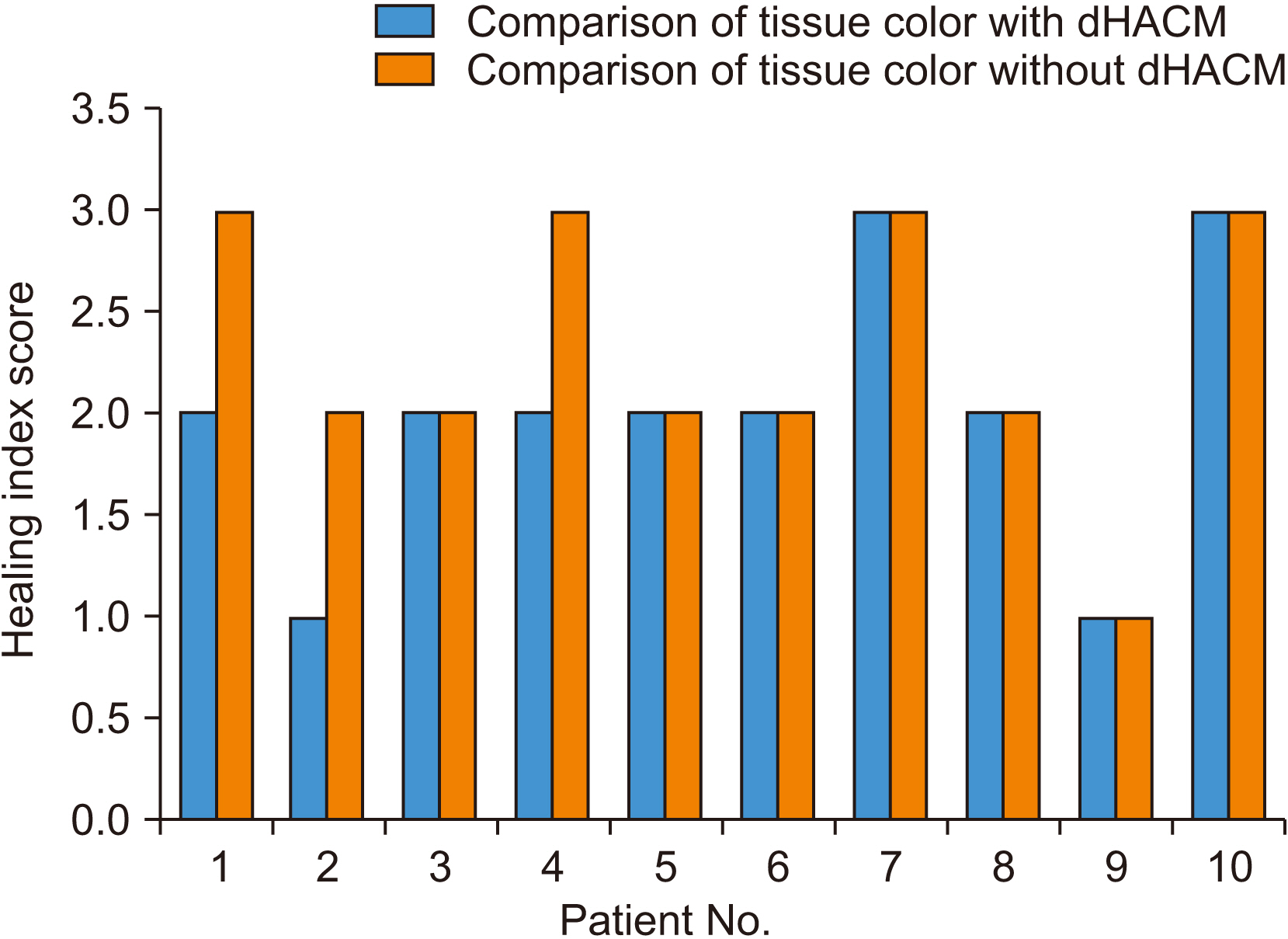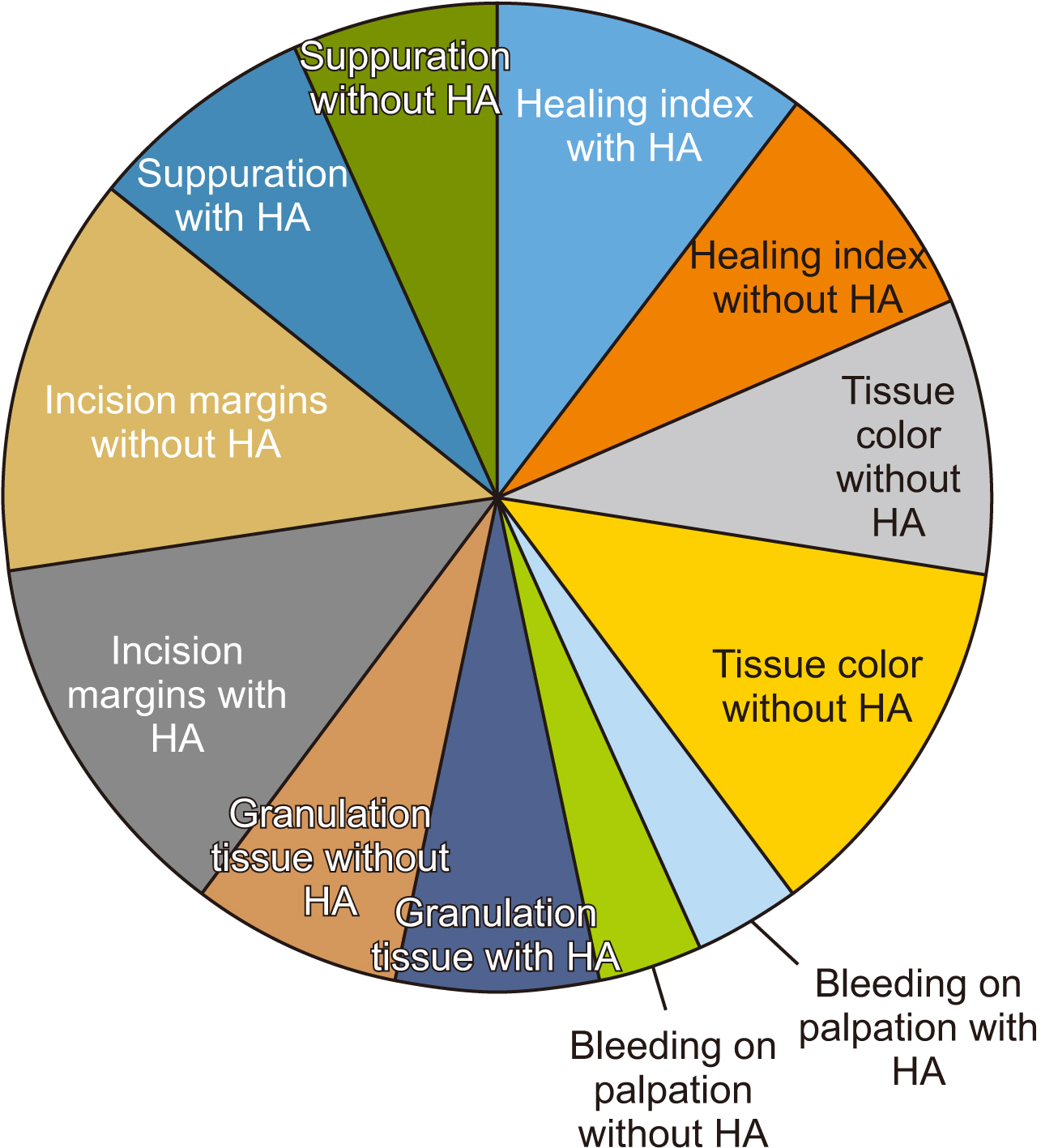J Korean Assoc Oral Maxillofac Surg.
2021 Aug;47(4):279-285. 10.5125/jkaoms.2021.47.4.279.
Comparative evaluation of the efficacy of wound healing with and without dehydrated human amniotic/chorionic membrane in alveoloplasty: a pilot study
- Affiliations
-
- 1Department of Oral & Maxillofacial Surgery, Dr. D. Y. Patil Vidyapeeth, Pune, India
- KMID: 2519825
- DOI: http://doi.org/10.5125/jkaoms.2021.47.4.279
Abstract
Objectives
Wound healing is an integral part of any surgical procedure. Appropriate wound closure is critical to any successful surgical procedure, especially intraoral procedures. Various factors aid in wound healing, both pharmacological and non-pharmacological. Dehydrated human amniotic/ chorionic membrane (dHACM) is an emerging bioinert material that contains anti-inflammatory properties, angiogenetic properties, osteogenic potential, and various growth factors. The purpose of this study was to evaluate the efficacy of wound healing properties of dHACM in bilateral alveoloplasty patients.
Materials and Methods
A prospective split-mouth study was conducted on 10 patients. Site A received sutures with dHACM and site B was sutured without dHACM. Wound healing was assessed with the Landry, Turnbull, and Howley Index.
Results
Sites A and site B were compared. A P<0.05 and a test value of 22 was obtained, indicating a statistical difference between the two sites.
Conclusion
Our study showed better healing with dHACM than without.
Keyword
Figure
Reference
-
References
1. Politis C, Schoenaers J, Jacobs R, Agbaje JO. 2016; Wound healing problems in the mouth. Front Physiol. 7:507. https://doi.org/10.3389/fphys.2016.00507 . DOI: 10.3389/fphys.2016.00507. PMID: 27853435. PMCID: PMC5089986.
Article2. Tenenhaus M. 2017; The use of dehydrated human amnion/chorion membranes in the treatment of burns and complex wounds: current and future applications. Ann Plast Surg. 78(2 Suppl 1):S11–3. https://doi.org/10.1097/SAP.0000000000000983 . DOI: 10.1097/SAP.0000000000000983. PMID: 28079550.
Article3. Tettelbach W, Cazzell S, Reyzelman AM, Sigal F, Caporusso JM, Agnew PS. 2019; A confirmatory study on the efficacy of dehydrated human amnion/chorion membrane dHACM allograft in the management of diabetic foot ulcers: a prospective, multicentre, randomised, controlled study of 110 patients from 14 wound clinics. Int Wound J. 16:19–29. https://doi.org/10.1111/iwj.12976 . DOI: 10.1111/iwj.12976. PMID: 30136445. PMCID: PMC7379535.
Article4. Gangwani KD, Shetty L, Kulkarni D, Seshagiri R, Chopra R. 2018; Piezosurgery versus conventional method alveoloplasty. Ann Maxillofac Surg. 8:181–7. https://doi.org/10.4103/ams.ams_162_18 . DOI: 10.4103/ams.ams_162_18. PMID: 30693229. PMCID: PMC6327828.
Article5. Nandhana S. Kathiravan. 2017; Incidence of alveoloplasty post extraction - a retrospective study. J Pharm Sci Res. 9:441–3.6. Van der Weijden F, Dell'Acqua F, Slot DE. 2009; Alveolar bone dimensional changes of post-extraction sockets in humans: a systematic review. J Clin Periodontol. 36:1048–58. https://doi.org/10.1111/j.1600-051X.2009.01482.x . DOI: 10.1111/j.1600-051X.2009.01482.x. PMID: 19929956.
Article7. Suthar P, Shah S, Waknis P, Limaye G, Saha A, Sathe P. 2020; Comparing intra-oral wound healing after alveoloplasty using silk sutures and n-butyl-2-cyanoacrylate. J Korean Assoc Oral Maxillofac Surg. 46:28–35. https://doi.org/10.5125/jkaoms.2020.46.1.28 . DOI: 10.5125/jkaoms.2020.46.1.28. PMID: 32158678. PMCID: PMC7049767.
Article8. Arai N, Tsuno H, Okabe M, Yoshida T, Koike C, Noguchi M, et al. 2012; Clinical application of a hyperdry amniotic membrane on surgical defects of the oral mucosa. J Oral Maxillofac Surg. 70:2221–8. https://doi.org/10.1016/j.joms.2011.09.033 . DOI: 10.1016/j.joms.2011.09.033. PMID: 22197005.
Article9. Faulk WP, Matthews R, Stevens PJ, Bennett JP, Burgos H, Hsi BL. 1980; Human amnion as an adjunct in wound healing. Lancet. 1:1156–8. https://doi.org/10.1016/s0140-6736(80)91617-7 . DOI: 10.1016/s0140-6736(80)91617-7. PMID: 6155575.
Article10. Kim JS, Kim JC, Na BK, Jeong JM, Song CY. 2000; Amniotic membrane patching promotes healing and inhibits proteinase activity on wound healing following acute corneal alkali burn. Exp Eye Res. 70:329–37. https://doi.org/10.1006/exer.1999.0794 . DOI: 10.1006/exer.1999.0794. PMID: 10712819.
Article11. Rinastiti M, Harijadi , Santoso AL, Sosroseno W. 2006; Histological evaluation of rabbit gingival wound healing transplanted with human amniotic membrane. Int J Oral Maxillofac Surg. 35:247–51. https://doi.org/10.1016/j.ijom.2005.09.012 . DOI: 10.1016/j.ijom.2005.09.012. PMID: 16386878.
Article12. Amemiya T, Nakamura T, Yamamoto T, Kinoshita S, Kanamura N. 2010; Immunohistochemical study of oral epithelial sheets cultured on amniotic membrane for oral mucosal reconstruction. Biomed Mater Eng. 20:37–45. https://doi.org/10.3233/BME-2010-0613 . DOI: 10.3233/BME-2010-0613. PMID: 20448302.
Article13. Kothari CR, Goudar G, Hallur N, Sikkerimath B, Gudi S, Kothari MC. 2012; Use of amnion as a graft material in vestibuloplasty: a clinical study. Br J Oral Maxillofac Surg. 50:545–9. https://doi.org/10.1016/j.bjoms.2011.09.022 . DOI: 10.1016/j.bjoms.2011.09.022. PMID: 22024106.
Article14. Lakshmi S, Bharani S, Ambardar K. 2015; Repair of an oroantral communication by a human amniotic membrane: a novel technique. J Korean Assoc Oral Maxillofac Surg. 41:194–7. https://doi.org/10.5125/jkaoms.2015.41.4.194 . DOI: 10.5125/jkaoms.2015.41.4.194. PMID: 26339578. PMCID: PMC4558188.
Article15. Kar IB, Singh AK, Mohapatra PC, Mohanty PK, Misra S. 2014; Repair of oral mucosal defects with cryopreserved human amniotic membrane grafts: prospective clinical study. Int J Oral Maxillofac Surg. 43:1339–44. https://doi.org/10.1016/j.ijom.2014.07.018 . DOI: 10.1016/j.ijom.2014.07.018. PMID: 25132569.
Article16. Tsuno H, Arai N, Sakai C, Okabe M, Koike C, Yoshida T, et al. 2014; Intraoral application of hyperdry amniotic membrane to surgically exposed bone surface. Oral Surg Oral Med Oral Pathol Oral Radiol. 117:e83–7. https://doi.org/10.1016/j.oooo.2012.05.014 . DOI: 10.1016/j.oooo.2012.05.014. PMID: 22981093.
Article17. Ahn KM, Lee JH, Lee UL, Lee JH, Lee JW, Kim SP, et al. 2006; Development of biocompatible dressing material made of collagen and amniotic membrane and wound healing experiment in rat. J Korean Oral Maxillofac Surg. 32:189–99.18. Hassan M, Prakasam S, Bain C, Ghoneima A, Liu SS. 2017; A randomized split-mouth clinical trial on effectiveness of amnion-chorion membranes in alveolar ridge preservation: a clinical, radiologic, and morphometric study. Int J Oral Maxillofac Implants. 32:1389–98. https://doi.org/10.11607/jomi.5875 . DOI: 10.11607/jomi.5875. PMID: 29140383.
Article19. Lyons AB, Chipps LK, Moy RL, Herrmann JL. 2018; Dehydrated human amnion/chorion membrane allograft as an aid for wound healing in patients with full-thickness scalp defects after Mohs micrographic surgery. JAAD Case Rep. 4:688–91. https://doi.org/10.1016/j.jdcr.2018.03.015 . DOI: 10.1016/j.jdcr.2018.03.015. PMID: 30128339. PMCID: PMC6098201.
Article20. Zhou S, Sun C, Huang S, Wu X, Zhao Y, Pan C, et al. 2018; Efficacy of adjunctive bioactive materials in the treatment of periodontal intrabony defects: a systematic review and meta-analysis. Biomed Res Int. 2018:8670832. https://doi.org/10.1155/2018/8670832 . DOI: 10.1155/2018/8670832. PMID: 29977919. PMCID: PMC5994283.
Article21. Puyana S, Ruiz S, Elkbuli A, Bernal E, McKenney M, Askari M, et al. 2020; The use of dehydrated human amniotic membrane versus amniotic/chorionic membrane allografts to treat partial thickness facial burns. J Craniofac Surg. 31:201–3. https://doi.org/10.1097/SCS.0000000000005834 . DOI: 10.1097/SCS.0000000000005834. PMID: 31369508.
Article22. Nanda S, Chakraborty S, Ray A, Inamuddin . 2011; Healing of cervical necrotizing fasciitis using amniotic membrane as a dressing material. Natl J Maxillofac Surg. 2:147–51. https://doi.org/10.4103/0975-5950.94469 . DOI: 10.4103/0975-5950.94469. PMID: 22639502. PMCID: PMC3343392.
Article23. Cullum D, Lucas M. 2019; Minimally invasive extraction site management with dehydrated amnion/chorion membrane (dHACM): open-socket grafting. Compend Contin Educ Dent. 40:178–83. PMID: 30829498.24. Doig GS, Simpson F. 2005; Randomization and allocation concealment: a practical guide for researchers. J Crit Care. 20:187–91. discussion 191–3. https://doi.org/10.1016/j.jcrc.2005.04.005 . DOI: 10.1016/j.jcrc.2005.04.005. PMID: 16139163.
Article
- Full Text Links
- Actions
-
Cited
- CITED
-
- Close
- Share
- Similar articles
-
- Human Amniotic Membrane Transplantation for Treatment of Fungal Ulcer
- The Effect of Amniotic Membrane Patch in Wound Healing of Skin Defect
- Effectiveness of Amniotic Membrane Patch in the Treatment of Chronic Ulcers
- The Effects of Amniotic Membrane Contact Lens for Cornea Wound Healing
- The Effect of Amniotic Membrane on Epithelial Wound Healing in Rabbit Cornea after Phototherapeutic Keratectomy

